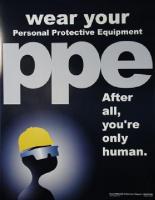Did you know that your knee is the largest joint in your body? It can also be a joint with much pain, when it is aggravated through an on-the-job injury, sports/recreational activities, age, osteoporosis or arthritis. The knee is connected to the tibia and fibula (lower leg bones) and the femur (upper leg bone) by ligaments, tendons, and muscles, which very often become sprained or strained.
Whether you engage in sports, landscaping, or many other industrial occupations, which cause strains on your knees, there are ways to prevent some knee injuries:
- Wear protective equipment,knee pads, shin guards, etc.
- Always warm up and cool down
- Weightlifting strengthens muscles
- Stretching helps
- Braces, rest, and/or physical therapy relieve stress on knees
- Avoid prolonged, repeated pressure on knees
- Do not twist your body
Our knees are a very important yet complicated part of our anatomy. In order to keep going as long as possible, we need to take care of them, beginning at a very young age.
